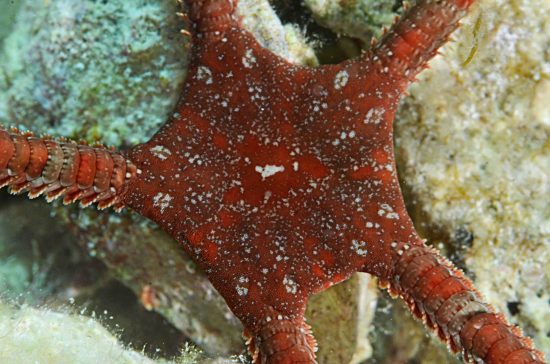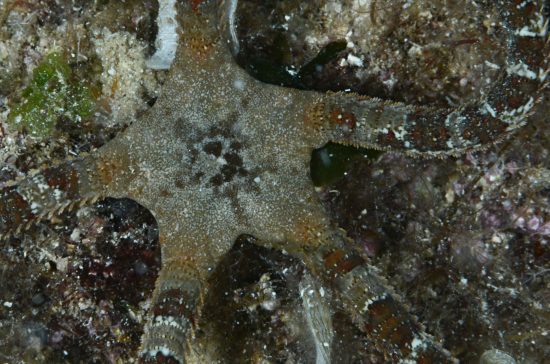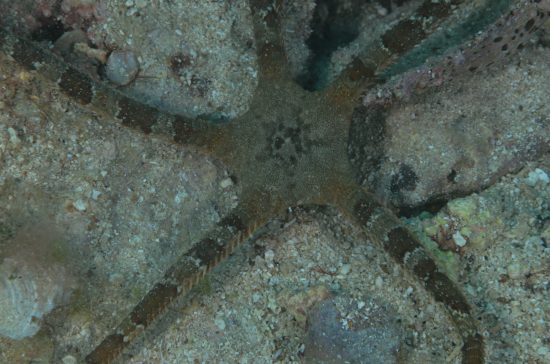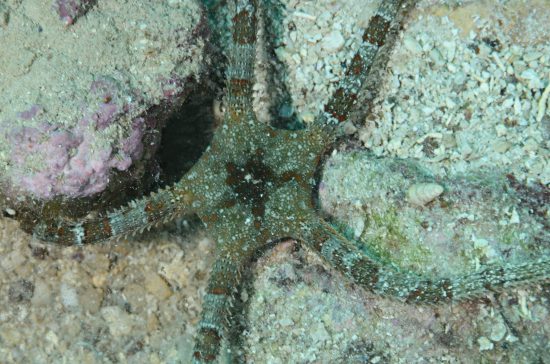





Brittle stars belong to the class Ophiuroidea within the phylum Echinodermata, which also includes sea stars, sea urchins and sea cucumbers. Their class name derives from the Greek words for ‘serpent’ (ophis) and ‘tail’ (oura). Today, we commonly refer to them as ‘brittle stars’ due to their ability to quickly lose an arm to a predator – allowing them to survive and later regenerate the lost limb!
With over 2,000 species described, brittle stars can be found in all oceanic environments—from shallow tidal pools to the depths of the abyss. In the Indo-Pacific region alone, you can spot around 825 species!
Brittle stars can be found in mesmerizing millions at Brittle Star City, often dubbed the "Hollywood of the Sea." This breathtaking underwater metropolis, located off the coast of Antarctica, showcases tens of millions of brittle stars congregating in the cold ocean depths. Their slender arms twist and coil in synchronized movements, reshaping the seafloor while playing vital roles in the marine ecosystem. Just as Hollywood celebrates its stars, this deep-water wonder off the coast of Antarctica highlights the incredible diversity and adaptability of brittle stars, emphasizing the importance of community in the ocean's depths.
While they share a common family tree with sea stars (Asteroidea), brittle stars are distinct in several exciting ways:
Unlike their thicker, more triangular cousins, brittle stars feature a central disk with slender, flexible arms that can stretch up to 24 inches long. This central disk houses all their internal organs, including a large stomach and five jaws. Sea stars, on the other hand, have arms that merge directly at a single point and contain vital organs within their limbs.
Say goodbye to the slow and steady water vascular system of sea stars! Brittle stars are the speedsters of the echinoderm world, using their long, snakelike arms to twist and coil their way across the seafloor. This unique locomotion allows them to navigate quickly and squeeze into tight spots, making them adept at avoiding predators.
Despite lacking a brain, brittle stars are far from simple. Their nervous system consists of a nerve ring near their mouth and individual nerve cords in each arm, allowing for coordinated movement. They can even learn from their environment! Recent research from Duke University shows that brittle stars can form associations between stimuli, a process akin to classical conditioning. For instance, they can learn that when the lights dim, dinner might soon follow!
Brittle stars are omnivores, primarily feeding on detritus, small organisms and algae. While they are often seen as scavengers, their role in the ecosystem is much more complex. By consuming detritus and filtering particles from the water, they help maintain the balance of their underwater habitats, acting as "seafloor ecosystem engineers" that reshape sediment and influence the distribution of other marine species. However, brittle stars also serve as an important food source for larger predators like fish and sea stars, completing the marine food web.
To evade predation, they hide in cracks and crevices and can detect chemical signals from nearby starfish, giving them a head start to escape.
Additionally, when threatened, they can sacrifice an arm to escape predators, a process known as autotomy. The good news? Their limbs regenerate over time, as long as the central disk remains intact! Their predators include not only sea stars but also gastropods, fish and crabs, and they face threats from parasites such as protozoans, nematodes, and algae.
Next time you stroll along a beach or explore tide pools, keep an eye out for these fascinating creatures. With their graceful movements, unique adaptations, and essential ecological roles, brittle stars are truly the unsung heroes of the marine world. They may not have the iconic status of their sea star relatives, but in their own right, they are the stars of the sea.
Written by Lena Ilic with photos by Ivana OK.
 Ivana and Janez
Ivana and Janez 20th November 2024
20th November 2024